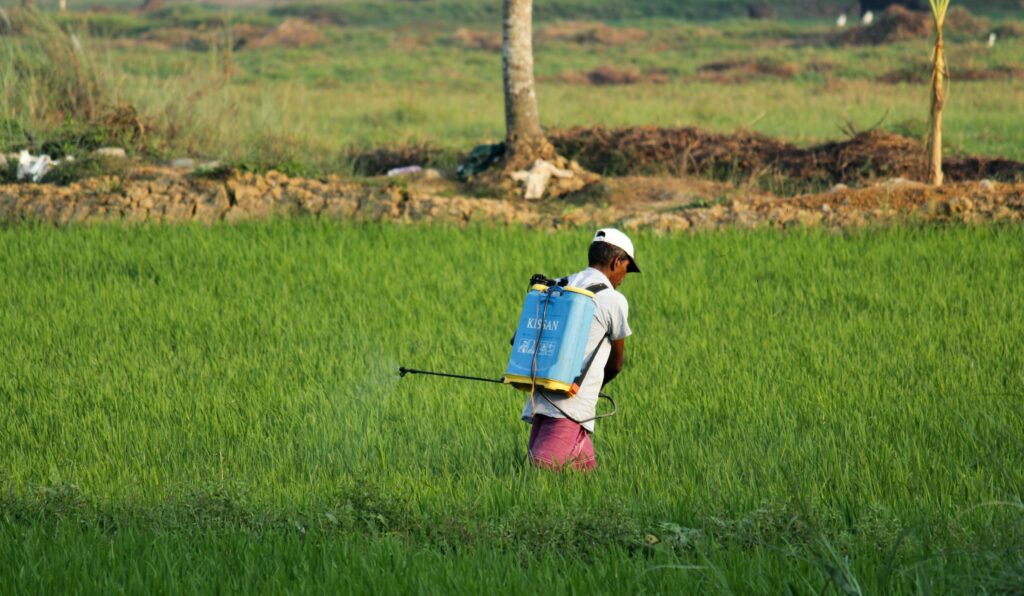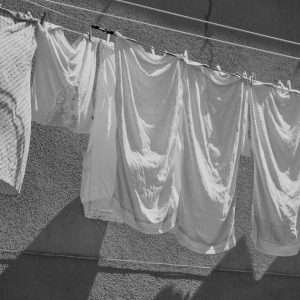Cotton is a versatile and widely used natural fiber that has played a pivotal role in the textile industry for centuries. We would like to take you on a journey to the cotton fields. Each step has its environmental footprint, and the conventional methods often associated with cotton farming have raised significant concerns about their impact on the environment, animals, and people. It is no coincidence that cotton is called the world’s dirtiest crop and we’d like to tell you why.
Note: In this article, we are talking about conventional cotton. Currently, conventional cotton accounts for 24% of worldwide textile production. In comparison, organic cotton accounts for only 1.4% of worldwide cotton production.

Pesticide-use
Cotton cultivation
The cotton production process begins with planting cotton seeds in the field. Conventional farming often relies on synthetic pesticides to protect cotton crops from pests and diseases. When putting this into numbers: Cotton accounts for 16% of insecticides used in agriculture worldwide. In comparison, only 2.5% of worldwide farmland is used for cotton.
Why is the use of pesticides bad?
Pesticides contaminate soil, water, and air. Using it can result in habitat destruction. For instance, when pesticides contaminate water, aquatic ecosystems can be severely affected. Fish, amphibians, and aquatic plants can be harmed or killed, leading to a decrease in biodiversity.
They are designed to be toxic to pests and insects that can damage cotton crops. Unfortunately, these chemicals are not specific in their impact and can harm non-target organisms, including beneficial insects, birds, and mammals. When exposed to pesticides, these creatures suffer from poisoning, leading to population declines.
In addition, pesticides disrupt food chains and ecosystems. Predatory insects, birds, and mammals that rely on pest insects for food may suffer a decline in their prey population when pesticides are used. This can lead to imbalances in the ecosystem and potentially cause cascading effects on other species.

Loss of biodiversity
And the list goes further than the environment and animals alone. Farmers and their families suffer from death and sickness due to pesticide poisoning. They often earn a wage below living standards and due to the profit maximization goals of large firms, they are forced to use pesticides. Google the Aral Sea and you will see the devastating effects of the cotton industry.
Making matters worse, rich countries (like the US and China) provide cotton subsidies to US farmers, resulting in artificially low prices of cotton. Farmers in developing countries are not able to compete with these prices and have difficulties making ends meet. 70% of child labour (112 million children) happens in agriculture, and cotton is one of the crops where there the incidence of child labour is very high.
Crop growth
Cotton is known for its thirst during its growth cycle. It is a water-intensive crop, requiring thousands of Liters of water per kilogram produced. In regions with limited water resources, this can strain ecosystems and communities. In numerous regions, the available rainfall is insufficient to sustain cotton growth. To compensate for this deficit, cotton fields are often irrigated using water sourced from nearby rivers. Regardless of the origin of this irrigation water, the volume of water extracted can be so substantial that it leads to significant reductions in river flows and the depletion of groundwater reserves. To make 1 cotton T-shirt, 2700 Liter of water is used. This is equivalent to 2 years of drinking water for 1 person!

Draught in areas where cotton is produced
What can we do about this?
Every time we buy clothes made from conventional cotton, we contribute to this toxic chain. We must transform our perception of the fashion industry and reconnect with the farmers who grow the materials for our clothes. The harsh reality is that a significant portion of these individuals are currently unable to secure a sustainable income. Without the farmers earning a normal living wage, not much will be done to the devastating effects the cotton industry has on the environment.
To end this article on a positive note: luckily, there are many initiatives to make the production of cotton fair and sustainable. An example is organic cotton, which has multiple benefits over conventional cotton.
- It uses 91% less water
- 62% lower energy demand
- 46% lower CO2 emissions
- 26% lower soil erosion
- 0% chemical pesticides
Stay tuned for a more extensive post about organic cotton.







